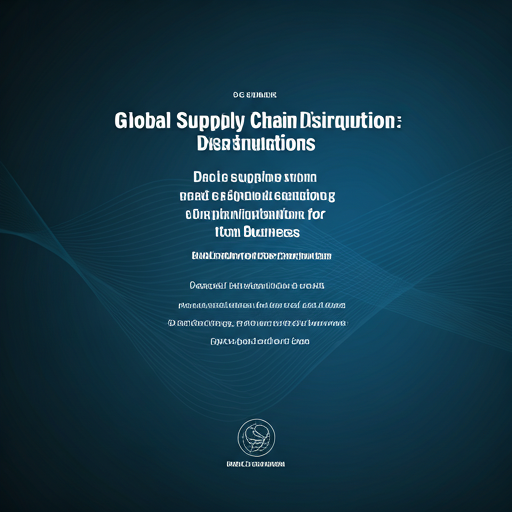Introduction to Wealth Management in the Cryptocurrency Era
The Evolution of Wealth Management
Wealth management has undergone significant transformation with the rise of cryptocurrency. Traditional investment strategies are now being challenged by digital assets. This shift requires wealth managers to adapt their approaches. For instance, they must understand blockchain technology and its implications for asset security. Many clients are now seeking exposure to cryptocurrencies as part of their portfolios. This trend is reshaping the landscape of wealth management.
Moreover, the integration of cryptocurrencies offers diversification opportunities. It can enhance risk-adjusted returns. Clients are increasingly interested in alternative investments. This is a notable change. As a result, wealthiness managers must stay informed about market trends. Knowledge is power. Understanding client preferences is crucial for success.
Impact of Cryptocurrency on Traditional Wealth Management
Cryptocurrency is reshaping traditional wealth management practices. Financial advisors must now incorporate digital assets into their strategies. This integration requires a deep understanding of blockchain technology. Knowledge is essential for effective management. Clients are increasingly demanding cryptocurrency options in their portfolios. This shift presents both opportunities and challenges. Wealth managers must adapt to changing client expectations. Staying informed is crucial. The landscape is evolving rapidly. Embrace the change.
Importance of Adapting to Client Needs
Adapting to client needs is crucial in wealth management. Clients tlday seek personalized investment strategies. This requires understanding their unique financial goals. Each client is different. Wealth managers must listen actively to their concerns. Effective communication builds trust. Additionally, incorporating feedback can enhance service quality. Clients appreciate tailored solutions. This approach fosters long-term relationships. Satisfied clients are more likely to refer others. It’s a win-win situation.
Understanding Client Demographics and Preferences
Millennials and Gen Z: The New Investors
Millennials and Gen Z are emerging as influential investors. They prioritize sustainability and ethical practices. This generation values transparency in financial dealings. Trust is essential for engagement. Additionally, they are tech-savvy and prefer digital platforms. Online access is a must. These investors often seek educational resources to make informed decisions. Knowledge empowers them. Understanding their preferences is vital for success. Meeting their needs can lead to loyalty. It’s a significant opportunity.
High-Net-Worth Individuals and Cryptocurrency
High-net-worth individuals are increasingly exploring cryptocurrency as an investment vehicle. They seek diversification to enhance their portfolios. This demographic often has a higher risk tolerance. Understanding market volatility is crucial. Many are attracted to the potential for substantial returns. They also value privacy and security in transactions. Wealth managers must provide tailored strategies for these clients. Personalized advice is essential for effective management. Additionally, education on blockchain technology can empower informed decisions. Knowledge is key. Engaging with this group requires a proactive approach. Building trust is vital for long-term relationships.
Institutional Investors: Trends and Insights
Institutional investors are increasingly allocating capital to cryptocurrency. They recognize its potential for high returns. This group often seeks to diversify their portfolios. Risk management is a priority for them. Many institutional investors are also focused on regulatory compliance. Understanding the legal landscape is essential. They require robust security measures for their investments. Trust in custodial solutions is critical. Additionally, these investors value data-driven insights for decision-making. Engaging with this demographic demands a sophisticated approach. Building strong relationships is indispensable for success.
Technological Innovations Shaping Wealth Management
Blockchain Technology and Its Implications
Blockchain technology is revolutionizing wealth management practices. It enhances transparency and security in transactions. This innovation allows for real-time data access. He can make informed decisions quickly. Additionally, smart contracts automate processes, reducing operational costs. Efficiency is a significant advantage. Wealth managers can streamline compliance through blockchain’s immutable records. This technology fosters trust among clients. Understanding its implications is crucial for success. Knowledge is essential in this evolving landscape. Adapting to these changes is necesswry for competitive advantage.
Robo-Advisors and Automated Investment Solutions
Robo-advisors are transforming investment management through automation . They provide cost-effective solutions for portfolio management. This technology allows for personalized investment strategies. Clients can benefit from lower fees. Additionally, robo-advisors use algorithms to optimize asset allocation. Efficiency is a key advantage. They also offer ⁄7 access to investment accounts. Convenience is essential for modern investors. Understanding these tools can enhance financial decision-making. Knowledge is empowering. Engaging with robo-advisors can lead to better outcomes. It’s a smart choice.
Data Analytics for Personalized Client Experiences
Data analytics is essential for enhancing client experiences in wealth management. It enables firms to tailor services based on individual preferences. By analyzing client data, advisors can identify specific needs. This leads to more effective communication. Additionally, predictive analytics can forecast market trends. Anticipating changes is crucial for strategic planning. Clients appreciate personalized recommendations that align with their goals. Understanding their behavior is key. Engaging clients through data-driven insights fosters loyalty. Knowledge is invaluable in this competitive landscape.
Regulatory Landscape and Compliance Challenges
Understanding Cryptocurrency Regulations
Understanding cryptocurrency regulations is vital for compliance. Regulatory frameworks vary significantly across jurisdictions. He must stay informed about local laws. This complexity can create challenges for investors. Additionally, anti-money laundering (AML) and know your customer (KYC) requirements are critical. Adhering to these regulations is essential for legitimacy. Non-compliance can lead to severe penalties. Awareness of evolving regulations is necessary for success. Knowledge is power in this landscape painting. Engaging with legal experts can provide valuable insights. It’s a prudent approach.
Compliance Strategies for Wealth Managers
Wealth managers must implement robust compliance strategies. This includes regular training on regulatory requirements. He should ensure that all staff are informed. Additionally, establishing clear policies and procedures is essential. Documentation of compliance efforts is crucial for audits. Regular reviews of these policies can identify gaps. He must adapt to changing regulations promptly. Utilizing technology can streamline compliance processes. Ajtomation reduces human error. Engaging with legal advisors is also beneficial. Knowledge is key in this field.
Future Regulatory Trends to Watch
Future regulatory trends will likely focus on increased transparency. Regulators are emphasizing the need for clear disclosures. He must prepare for stricter compliance requirements. Additionally, the rise of decentralized finance (DeFi) will attract scrutiny . Understanding these developments is essential for adaptation. Enhanced consumer protection measures are also anticipated. Clients will demand more security in transactions. Staying informed about these trends is crucial. Knowledge is power in navigating regulations. Engaging with industry experts can provide valuable insights. It’s a proactive approach.
Strategies for Effective Wealth Management in Cryptocurrency
Diversification: Balancing Traditional and Digital Assets
Diversification is essential for effective wealth management. He should balance traditional assets with digital investments. This strategy mitigates risk and enhances potential returns. Allocating funds across various asset classes is crucial. He must consider market volatility when making decisions. Additionally, understanding the correlation between assets is important. This knowledge helps in optimizing the portfolio. Regularly reviewing asset allocation can identify necessary adjustments. Staying informed about market trends is vital. Knowledge is key to successful investing. Engaging with financial advisors can provide valuable insights. It’s a smart move.
Risk Management in a Volatile Market
Effective risk management is crucial in volatile markets. He should employ strategies to protect his investments. Diversification across asset classes can reduce exposure. This approach mitigates potential losses during downturns. Additionally, setting stop-loss orders can limit risks. He must regularly assess market conditions. Understanding volatility is indispensable for informed decisions. Utilizing hedging techniques can also provide protection. Knowledge is key in managing risk. Engaging with financial experts can enhance strategies. It’s a proactive measure.
Building Trust and Transparency with Clients
Building trust and transparency is essential in wealth management. He should communicate openly about investment strategies. Regular updates on portfolio performance foster confidence. Clients appreciate honesty regarding risks and fees. Providing clear documentation enhances understanding. This approach minimizes misunderstandings and builds rapport. Additionally, soliciting client feedback can improve services. Listening to concerns shows commitment to their needs. Knowledge is vital for establishing credibility. Engaging in educational discussions can empower clients. It’s a valuable investment in relationships.
Conclusion: The Future of Wealth Management
Embracing Change and Innovation
Embracing change and innovation is vital for wealth management. The industry is evolving rapidly due to technology. He must adapt to new tools and platforms. This includes utilizing data analytics for insights. Understanding client preferences is essential for success. Additionally, integrating digital assets into portfolios is becoming common. Clients expect modern solutions and flexibility. Staying ahead of trends can enhance competitiveness. Knowledge is crucial in this dynamic environment. Engaging with emerging technologies can drive growth. It’s an exciting opportunity for the future.
Long-Term Client Relationships in a Digital World
Long-term client relationships are essential in wealth management. In a digital world, maintaining personal connections is crucial. He must leverage technology to enhance communication. Regular updates and personalized interactions build trust. Additionally, understanding client goals fosters loyalty. Clients appreciate tailored strategies that align with their needs. Utilizing digital tools can streamline service delivery. This approach enhances efficiency and satisfaction. Knowledge of market trends is vital for informed discussions. Engaging clients through educational content is beneficial. It’s a proactive way to strengthen relationships.
Preparing for the Next Wave of Wealth Management Trends
Preparing for the next wave lf wealth management trends is essential. He must stay informed about emerging technologies . Understanding client expectations is crucial for adaptation. Clients increasingly seek personalized and digital solutions. This shift requires innovative strategies and tools. Regular training for staff enhances service quality. Knowledge of regulatory changes is also important. Compliance ensures trust and credibility. Engaging with industry experts can provide insights. It’s a proactive approach to future challenges.









